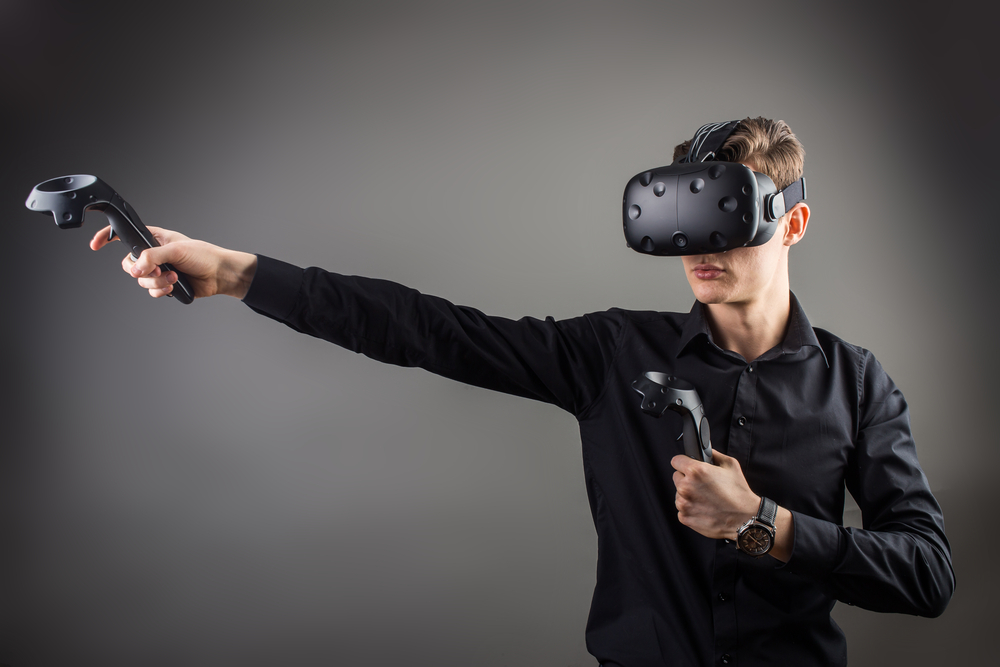Seamless, intuitive interaction within the digital realm stands as the holy grail for developers of virtual reality experiences. While high throughput graphic cards and VR focused rendering engines have made leaps and bounds over the past decade, interface devices have remained fairly stagnant, providing a distinctly lifeless experience through basic tracking and rumble feedback.
There is however hope, researchers and developer on the cutting edge of haptic feedback devices have been toiling tirelessly to imbue the VR experience with extra depth by providing a suite of sensory feedback to augment the visual experience.
Ready for Market, Ready to Game
The solution currently closest to market appears to be the Tactical Haptics cross platform feedback controller. Debuting at GDC 2013, the companies Reactive Grip prototype used the Razer Hydra to track the controller within physical space and deliver feedback to the user via a series of independent sliding contactor bars. By actuating the bars in response to onscreen stimulus, the controller is able to simulate a range of physical interactions including torsion, inertia, impact and motion.
The team showed off an updated version of their controller at CES 2018 that in, addition to looking more streamlined, featured the ability to completely reconfigure the controller on the fly using a series of semi rigid couplings to create different poses. This modular system allows users to adapt the differing circumstances of VR experiences without compromising the fluidity and pacing of in-world mechanics.
Tactical Haptics controllers allow user to connect a variety of third party tracking controllers to their platform, enabling support for both the Oculus Rift and HTC Vive devices, but have also chosen to extend that support to Optitrack supported systems for use in the research or enterprise environment.
Bleeding Edge Multi-Sensory Immersion
While physics based inertial interaction provides the ability to feel force feedback for the gross motor sensory faculties of the brain, bleeding edge VR requires a lighter touch. The ability to experience the nuanced aspects of reality such as running fingers through a patch of grass, plucking flowers from a virtual garden or patting a pet dragon.
A startup by the name of HaptX has developed a proof of concept prototype that combines force feedback with tactile feedback, combined with realistic temperature modelling to provide a more holistic immersion experience. To accomplish this feat, the engineers invented custom build microfluidic channels incorporated into a glove that enables the pneumatic actuators to target the users skin in highly specific areas to simulate varying degrees of touch, resistance and force feedback.
The technology provides a more sophisticated sense of touch that, when combined with heating and cooling elements within the device, convey a impressive simulacra of realistic sensory information. Unfortunately, in its current state, the company’s technology is fairly bulky and requires specialised complimentary equipment to run. However, the team has made portability a high priority and has been able to reduce the size of the prototype by 16 times since its debut at CES in 2017.
Shocking Full Body Feedback
A quick assessment of the cortical homunculus reveals the rationale of companies focusing their sensory feedback development on the two organs with the highest density of nerve endings.
However, this approach still lacks a level of immersion in its inability to replicate impact or muscular motor feedback for compound movements involving the arms, torso or lower body.
Teslasuit has approached this problem through a combination of electrostimulation, Peltier elements and high precision full body tracking to present users with a non invasive way to immerse their entire body into the virtual environment.
The process of using precise electro-stimulation applies a mild electric current to the users skin, forcing the muscles to contract in response. This allows the suit to provide feedback in a lightweight form factor as it does not rely on bulky mechanical apparatus such as vibrational motors or a framework of tendons.
Meanwhile, stacks of alternatively doped semiconducting materials form a controllable thermoelectric climate control system, enabling to suit to selectively provide heating or cooling to different areas of the suit. The Teslasuit contains up to 10 Thermo-climate points distributed across the suit that range from 20°C to 40°C that respond in real time to the simulated environment.
Haptic feedback is a vital tool-set in the hands of developers, enabling them to create sensory simulations that imbue their environments with a level depth and complexity in order to parallel reality itself. In its current infant state the haptic feedback market seems to be a niche and exclusive one, with prices expected to be pushing into the thousands, yet providing an experience that is still in a rough and unpolished state. This first generation of products may not be for everyone, but they show much promise for the VR future to come.












